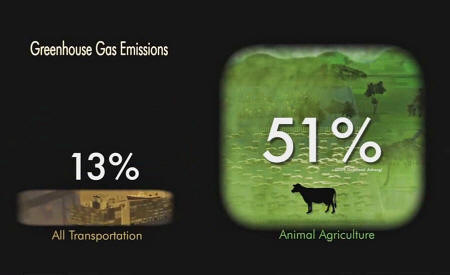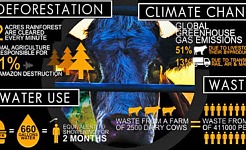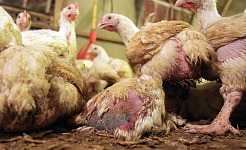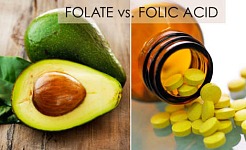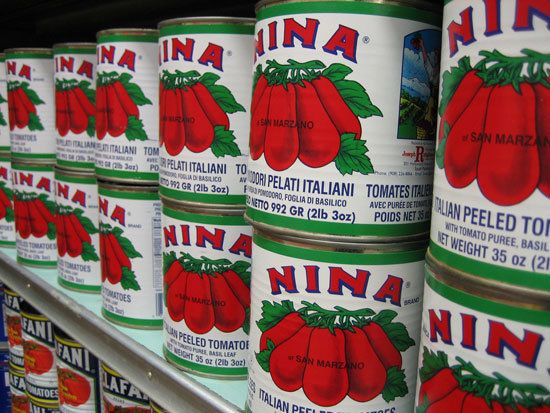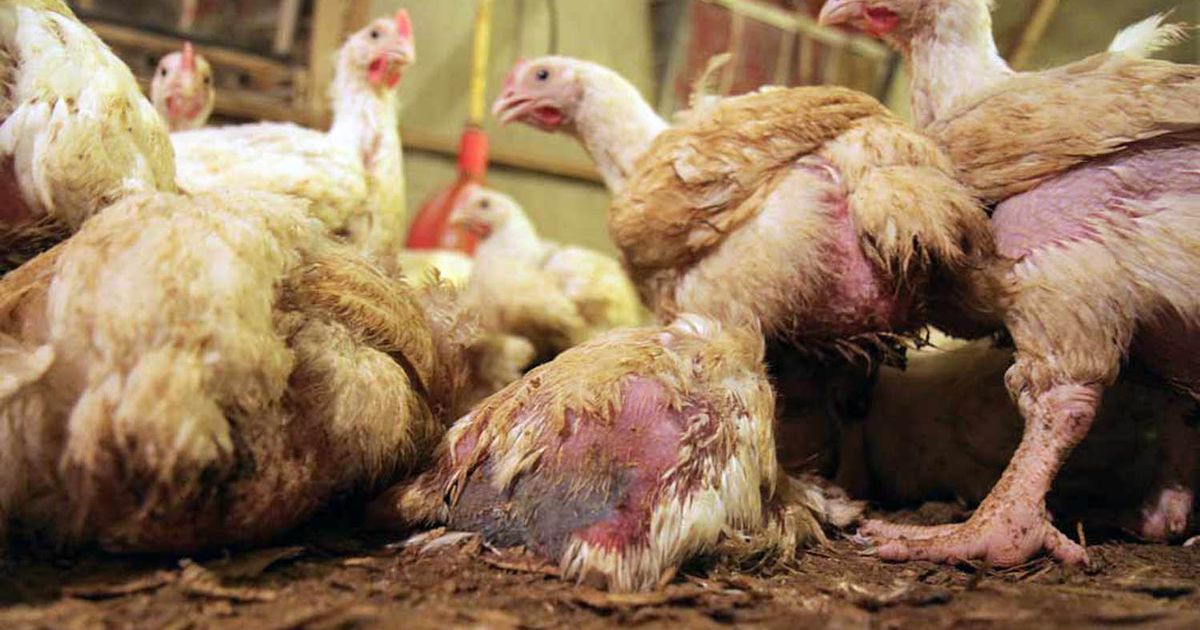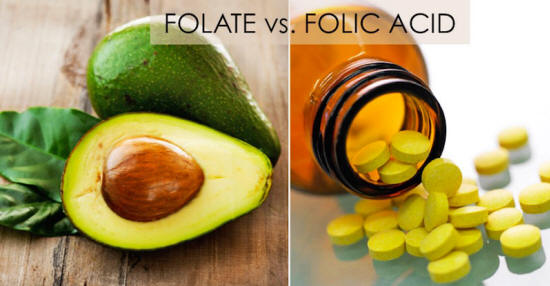- Details
- Written by root
- Category: bibliotecapleyades
Since 1995, 1100 activists have been killed for speaking out about animal agriculture.
Among them, Dorothy Stang a woman who dedicated her life to protect Brazil’s rain forest and its inhabitants. In 2005, Dorothy was murdered while walking to her home by a hired gun of the cattle industry.
In a report released by the United Nations Food and Agriculture Organization (FAO), it states that cattle rearing generates more global warming greenhouse gases than the entire transportation sector.
"Livestock are one of the most significant contributors to today’s most serious environmental problems," Senior UN Food and Agriculture Organization (FAO) official Henning Steinfeld said.
"Urgent action is required to remedy the situation."
Raising animals for food consumption uses,
30% of the world’s water
45% of the world’s land
is responsible for 91% of the destruction of the rain forest
Among these shocking figures, animal agriculture is also,
the leading cause of the oceans dead zones
the leading cause of habitat destruction
the leading cause of species extinction
Hydraulic Fraction for Natural Gas (fracking) has long been thought to be the leading cause of water usage and contamination as it consumes 100 billion gallons of water per year.
Yet, when compared to animal agriculture, there is no comparison. Weighing in at 34 trillion gallons per year in the United States alone.
This means that 2500 gallons of water are required to produce only 1 lb of beef.
To put that into perspective, that would be as much water usage as showering for 2 months to produce one hamburger.
Animal agriculture produces 65% of the world’s nitrous oxide (a gas with the global warming potential 296 x greater than carbon dioxide) and it is estimated that by 2050, this industry will see an 80% increase, as the demand for meat and dairy continues to rise.
At this rate of growth, it is estimated that the rain forest will be completely depleted in 10 years.
"Without using any gas or oil or fuel from this day forward we still exceed our maximum carbon equivalent greenhouse gas emissions of 565 gigatons by 2030″.
Environmental Researcher Dr. Richard Oppenlander
According to two environmental specialists in a 2009 World Watch report,
animal agriculture is responsible for 51% of all greenhouse gas emissions
the transportation sector equates to a mere 13%
Our environmental organizations are failing us and they are failing the ecosystem.
These groups who are supposed to be protecting the environment are just standing by. This should be the main focus and yet when you visit their websites, there is nothing to be found on agriculture.
Why? Because these organizations are like corporations, and profit is a bottom line.
1500 years ago animals roamed free, accounting for 99% of the biodiversity and humans were the 1%
Today, there are only 2% of animals roaming free on the land and humans account for 98% of the biodiversity
It’s time to wake up and realize that raising and killing animals for food, is precisely what is killing the planet.
Meatless Monday’s aren’t enough, we need a global shift.
We are in the middle of the largest mass extinction of species in the last 65 million years. We have to change, we have to evolve. Animal agriculture should be the leading cause of climate change, EVERYONE is talking about.
Watch this film...
- Details
- Written by root
- Category: bibliotecapleyades
Lies Big Food wants You to Believe and the Truth Behind Factory-'Farmed' Meat
Foods That Should Never Cross Your Lips
According to 'Science', Eating 'Too Much Salad' Now Causes Autism
- Details
- Written by root
- Category: bibliotecapleyades
Which foods should you avoid?
Clean eating means choosing fruits, vegetables, and meats that are raised, grown, and sold with minimal processing.
Often they're organic, and rarely (if ever) should they contain additives. But in some cases, the methods of today's food producers are neither clean nor sustainable.
The result is damage to our health, the environment, or both. So we decided to take a fresh look at food through the eyes of the people who spend their lives uncovering what's safe - or not - to eat.
We asked them a simple question:
"What foods do you avoid?"
Their answers don't necessarily make up a "banned foods" list.
But reaching for the suggested alternatives might bring you better health - and peace of mind.
1. Canned Tomatoes
Fredrick Vom Saal, PhD, an endocrinologist at the University of Missouri who studies bisphenol-A, gives us the scoop:
The problem:The resin linings of tin cans contain bisphenol-A, a synthetic estrogen that has been linked to ailments ranging from reproductive problems to heart disease, diabetes, and obesity. Unfortunately, acidity (a prominent characteristic of tomatoes) causes BPA to leach into your food.
Studies show that the BPA in most people's body exceeds the amount that suppresses sperm production or causes chromosomal damage to the eggs of animals.
"You can get 50 mcg of BPA per liter out of a tomato can, and that's a level that is going to impact people, particularly the young," says vom Saal. "I won't go near canned tomatoes."
The solution:
Choose tomatoes in glass bottles (which do not need resin linings), such as the brands Bionaturae and Coluccio. You can also get several types in Tetra Pak boxes, like Trader Joe's and Pomi.
Budget tip:If your recipe allows, substitute bottled pasta sauce for canned tomatoes. Look for pasta sauces with low sodium and few added ingredients, or you may have to adjust the recipe.
2. Corn-Fed Beef
Joel Salatin, co-owner of Polyface Farms and author of half a dozen books on sustainable farming, gives us the scoop:
The problem:Cattle evolved to eat grass, not grains. But farmers today feed their animals corn and soybeans, which fatten up the animals faster for slaughter. But more money for cattle farmers (and lower prices at the grocery store) means a lot less nutrition for us.
A recent comprehensive study conducted by the USDA and researchers from Clemson University found that compared with corn-fed beef, grass-fed beef is higher in beta-carotene, vitamin E, omega-3s, conjugated linoleic acid (CLA), calcium, magnesium, and potassium; lower in inflammatory omega-6s; and lower in saturated fats that have been linked to heart disease.
"We need to respect the fact that cows are herbivores, and that does not mean feeding them corn and chicken manure," says Salatin.
The solution:
Buy grass-fed beef, which can be found at specialty grocers, farmers' markets, and nationally at Whole Foods. It's usually labeled because it demands a premium, but if you don't see it, ask your butcher.
Budget tip:Cuts on the bone are cheaper because processors charge extra for deboning. You can also buy direct from a local farmer, which can be as cheap as $5 per pound. To find a farmer near you, search eatwild.com.
3. Microwave Popcorn
Olga Naidenko, PhD, a senior scientist for the Environmental Working Group, gives us the scoop:
The problem:Chemicals, including perfluorooctanoic acid (PFOA), in the lining of the bag, are part of a class of compounds that may be linked to infertility in humans, according to a recent study from UCLA. In animal testing, the chemicals cause liver, testicular, and pancreatic cancer.
Studies show that microwaving causes the chemicals to vaporize - and migrate into your popcorn.
"They stay in your body for years and accumulate there," says Naidenko, which is why researchers worry that levels in humans could approach the amounts causing cancers in laboratory animals.
DuPont and other manufacturers have promised to phase out PFOA by 2015 under a voluntary EPA plan, but millions of bags of popcorn will be sold between now and then.
The solution:Pop natural kernels the old-fashioned way: in a skillet. For flavorings, you can add real butter or dried seasonings, such as dillweed, vegetable flakes, or soup mix.
Budget tip:Popping your own popcorn is dirt cheap.
4. Nonorganic Potatoes
Jeffrey Moyer, chair of the National Organic Standards Board, gives us the scoop:
The problem:Root vegetables absorb herbicides, pesticides, and fungicides that wind up in soil.
In the case of potatoes - the nation's most popular vegetable - they're treated with fungicides during the growing season, then sprayed with herbicides to kill off the fibrous vines before harvesting.
After they're dug up, the potatoes are treated yet again to prevent them from sprouting.
"Try this experiment: Buy a conventional potato in a store, and try to get it to sprout. It won't," says Moyer, who is also farm director of the Rodale Institute (also owned by Rodale Inc., the publisher of Prevention).
"I've talked with potato growers who say point-blank they would never eat the potatoes they sell. They have separate plots where they grow potatoes for themselves without all the chemicals."
The solution:
Buy organic potatoes. Washing isn't good enough if you're trying to remove chemicals that have been absorbed into the flesh.
Budget tip:Organic potatoes are only $1 to $2 a pound, slightly more expensive than conventional spuds.
5. Farmed Salmon
David Carpenter, MD, director of the Institute for Health and the Environment at the University at Albany and publisher of a major study in the journal Science on contamination in fish, gives us the scoop:
The problem:Nature didn't intend for salmon to be crammed into pens and fed soy, poultry litter, and hydrolyzed chicken feathers. As a result, farmed salmon is lower in vitamin D and higher in contaminants, including carcinogens, PCBs, brominated flame retardants, and pesticides such as dioxin and DDT.
According to Carpenter, the most contaminated fish come from Northern Europe, which can be found on American menus.
"You could eat one of these salmon dinners every 5 months without increasing your risk of cancer," says Carpenter, whose 2004 fish contamination study got broad media attention. "It's that bad."
Preliminary science has also linked DDT to diabetes and obesity, but some nutritionists believe the benefits of omega-3s outweigh the risks.
There is also concern about the high level of antibiotics and pesticides used to treat these fish. When you eat farmed salmon, you get dosed with the same drugs and chemicals.
The solution:Switch to wild-caught Alaska salmon. If the package says fresh Atlantic, it's farmed. There are no commercial fisheries left for wild Atlantic salmon.
Budget tip:Canned salmon, almost exclusively from wild catch, can be found for as little as $3 a can.
6. Milk Produced with Artificial Hormones
Rick North, project director of the Campaign for Safe Food at the Oregon Physicians for Social Responsibility and former CEO of the Oregon division of the American Cancer Society, gives us the scoop:
The problem:Milk producers treat their dairy cattle with recombinant bovine growth hormone (rBGH or rBST, as it is also known) to boost milk production. But rBGH also increases udder infections and even pus in the milk. It also leads to higher levels of a hormone called insulin-like growth factor in milk.
In people, high levels of IGF-1 may contribute to breast, prostate, and colon cancers.
"When the government approved rBGH, it was thought that IGF-1 from milk would be broken down in the human digestive tract," says North.
As it turns out, the casein in milk protects most of it, according to several independent studies.
"There's not 100% proof that this is increasing cancer in humans," admits North. "However, it's banned in most industrialized countries."
The solution:
Check labels for rBGH-free, rBST-free, produced without artificial hormones, or organic milk. These phrases indicate rBGH-free products.
Budget tip:Try Wal-Mart's Great Value label, which does not use rBGH.
7. Conventional Apples
Mark Kastel, former executive for agribusiness and codirector of the Cornucopia Institute, a farm-policy research group that supports organic foods, gives us the scoop:
The problem:If fall fruits held a "most doused in pesticides contest," apples would win. Why? They are individually grafted (descended from a single tree) so that each variety maintains its distinctive flavor. As such, apples don't develop resistance to pests and are sprayed frequently. The industry maintains that these residues are not harmful.
But Kastel counters that it's just common sense to minimize exposure by avoiding the most doused produce, like apples.
"Farm workers have higher rates of many cancers," he says.
And increasing numbers of studies are starting to link a higher body burden of pesticides (from all sources) with Parkinson's disease.
The solution:Buy organic apples.
Budget tip:If you can't afford organic, be sure to wash and peel them. But Kastel personally refuses to compromise.
"I would rather see the trade-off being that I don't buy that expensive electronic gadget," he says. "Just a few of these decisions will accommodate an organic diet for a family."
- Details
- Written by root
- Category: bibliotecapleyades
"CAFO - The Tragedy of Industrial Animal Factories", edited by Daniel Imhoff and published by Watershed Media and the Foundation for Deep Ecology, is a must read and see book about the horrors of concentrated animal feeding operations (CAFOs).
Featuring more than 400 photographs and 30 essays, the book includes contributions from,
Wendell Berry
Wenonah Hauter
Fred Kirschenmann
Anna Lappé
Michael Pollan
Eric Schlosser
CAFOs reveal what goes on in so-called "factory farms" and the impact of industrial meat production on animals, our environment, our communities, our agricultural system and our health.
Below is a short extract from the book. Visit the book's website to learn more about CAFOs and what needs to be done to end industrial meat production.
Lie #1 - Industrial food is cheap
The retail prices of industrial meat, dairy and egg products ignore the huge impacts on human health, the environment and other common public goods.
These costs, called "externalities" by economists, include massive waste emissions that can warm the atmosphere, spoil fisheries, pollute drinking water, spread disease, contaminate soil and damage recreational areas. Citizens end up footing the bill with hundreds of billions of dollars in taxpayer subsidies, health care costs, insurance premiums, declining property values and rising cleanup costs.
Walk into any fast food chain and you are likely to find a "value" meal: chicken nuggets or cheeseburgers and fries at a price that is almost too good to be true.
For families struggling to make ends meet, a cheap meal may seem too difficult to pass up. Livestock farm advocates often point to the low prices of American fast food as proof that the system works.
The CAFO system, they argue, provides affordable food for the masses.
But the myth of cheap meat, dairy and egg products revolves around rising external social and ecological costs that never show up on restaurant bills or food bills.
Staggering environmental burdens
The environmental damage alone should dispel any illusion that food produced in industrial livestock farms is cheap.
For decades, soil and water have been poisoned by decades of synthetic fertilisers and pesticides used to produce billions of tonnes of animal feed. Water bodies have been contaminated with animal waste. The atmosphere is full of powerful greenhouse gases such as carbon dioxide, methane and nitrous oxide. The costs of mitigating these problems are enormous.
Worse still, this basic clean-up of polluted resources is largely not being done.
To cite just one example, agricultural runoff - especially nitrogen and phosphorus from poultry and hog farms - is a major source of pollution in the Chesapeake Bay, once a vibrant East Coast fishery and now a hotbed of many species on the brink of collapse. One study estimated the cost of restoring the Bay at $19 billion, $11 billion of which would be spent on "nutrient reduction".
There are more than 400 such dead zones worldwide.
Health costs
Industrial livestock farming poses serious health risks and costs for farmers, workers and consumers. CAFO workers and neighboring communities also suffer from emissions associated with industrial farming.
Medical researchers have linked the country's intensive meat consumption to serious human health conditions such as heart disease, stroke, diabetes and certain types of cancer. These diseases alone cost more than $33 billion a year in the US alone. Antibiotic-resistant organisms ('superbugs'), which are created as a result of the overuse of antibiotics in industrial meat and dairy production, can increase people's vulnerability to infection.
A widely cited US study estimated the total annual cost of antibiotic resistance at $30 billion. The estimated annual US costs associated with E. coli O157:H7 bacteria, primarily from animal manure, reach $405 million: $370 million in deaths, $30 million in medical care and $5 million in lost productivity.
All these related health problems increase the cost of social services and insurance premiums. They reduce productivity and increase the number of sick days taken by workers.
They can also lead to premature death, at incalculable cost to families and communities.
Farm communities
Retail prices of cheap animal foods do not reflect the fact that industrial agriculture continues to displace farm families and the ongoing closure of businesses in rural communities.
According to Robert F. Kennedy Jr., the average industrial hog factory is destroying ten family farmers and replacing high-quality agricultural jobs with three to four hourly workers doing relatively low-paid and potentially dangerous work.
When small-scale farmers face hardship, many local employers close their doors and, in the worst cases, entire communities, towns and regional food production and distribution networks disappear from the landscape.
Government subsidies
Perverse government subsidies - both in the US and Europe - provide billions of tax dollars to support industrial livestock production.
Researchers at Tufts University estimate that in the US alone, between 1997 and 2005, the industrial livestock sector saved more than $35 billion as a result of federal farm subsidies that reduced the price of the feed they bought.
Similar savings were not available to many small and medium-sized farmers who grew their own feed and raised livestock in diversified pasture-based systems. Under the 2002 US farm bill, individual CAFO investors were also eligible to receive up to $450,000 from the US government for animal waste management under a five-year EQIP contract, allowing large operations with many investors to reap much larger sums.
European Union farm subsidies also support industrial livestock farmers, providing $2.25 a day per dairy cow - 25 cents more than half the world's human population lives on.
A less expensive alternative
In contrast, many sustainable livestock farms use production methods to address potential negative health and environmental impacts.
They produce less waste and forego hazardous chemicals and other additives. Pasture-raised meat and dairy products have been shown to be high in omega-3 and other fatty acids, which have anti-cancer properties. Smaller farms also receive fewer and smaller federal subsidies.
While sustainably produced foods may cost a little more, many of their potentially beneficial environmental and social impacts are already included in the price.
Lie #2 - Industrial food is efficient
Industrial food livestock producers often proclaim that "bigger is better" and ridicule the "inefficiency" of small to medium sized farms using low-impact technologies.
However, CAFOs currently rely on heavily subsidized agriculture to produce feed, large capital injections to dominate markets, and lax regulations on waste disposal.
Perverse incentives and market controls give an unfair competitive advantage to smaller producers and obscure a more holistic view of efficiency.
Factory farms and CAFOs only appear efficient when we focus on the amount of meat, milk or eggs produced from each animal in a given time.
But high productivity or market share dominance should not be confused with efficiency. If we measure the total cost per unit of production, or even the net profit per animal, the picture is more sobering.
Confined housing comes with severe external costs - inefficiencies that go beyond the CAFO or feedlot. These hidden costs include subsidized grain discounts, unsanitary market controls, depleted aquifers, polluted air and waterways, and concentrated surpluses of toxic feces and urine.
The vast global area of monocultures producing maize, soybeans and hay to feed confined animals could arguably be more effectively managed in the form of smaller, diversified farms and grazing operations, along with protected wild areas.
Reverse protein factories
Livestock farms achieve efficiency by replacing pasture with maize and soya, and even wild fish.
To reach one pound of body weight, a broiler chicken needs to eat an average of 2.3 pounds of feed. Pigs convert 5.9 pounds of feed into a pound of pork. Cattle need 13 pounds of feed to produce one pound of beef, although some estimates are much higher. To supplement the feed, one-third of the world's catch of marine fish is ground up and added to the rations of pigs, broilers and farmed fish.
A 2006 UN Food and Agriculture Organization report, Livestock's Long Shadow, summed it up this way:
"In simple numbers, livestock production actually takes more from the total food supply than it provides... In fact, livestock consume 77 million tonnes of protein in feed that could potentially be used for human consumption, while 58 million tonnes of protein is contained in the food provided by livestock."
Full recall
The effectiveness of slaughterhouse practices must also be questioned, as their incessant growth in speed, drive for profit and sheer size has led to contamination and mass meat recalls.
In the United States alone, between spring 2007 and spring 2009, there were 25 recalls involving 44 million pounds of beef due to the virulent E. coli O157:H7 pathogen.
When all the costs of research, prevention and market losses are added together, E. coli contamination has cost the beef industry an estimated $1.9 billion over the past decade.
Waste accumulation
The U.S. Department of Agriculture estimates that factory farms produce more than 500 million tons of waste each year - more than three times the amount produced by the country's human population.
On a small, diversified farm, much of this manure can be effectively used as fertilizer.
Instead, most CAFOs store waste in huge lagoons or dry waste piles that emit toxic fumes, leak or overflow.
Soil and surface water can be contaminated with bacteria and antibiotics.
pesticides and hormones containing endocrine disruptors.
dangerously high levels of nitrogen, phosphorus and other nutrients
Inconsistent enforcement has allowed CAFO disposal problems to escalate in many areas.
Meanwhile, the environmental and health impacts of this contamination are rarely calculated as part of the narrow set of parameters that CAFO operators use to determine effectiveness.
Government subsidies
Not only do CAFOs impose environmental and health costs on citizens, they also feed at the proverbial public trough.
Between 1997 and 2005, US government subsidies saved farms $3.9 billion a year by allowing them to buy corn and soybeans at prices below the cost of production.
Without these feed discounts, which represent a 5 to 15 percent reduction in operating costs, it is unlikely that many industrial farms could remain profitable. By contrast, many small farms, which produce most of their own feed, do not receive public aid. Yet they are expected to somehow match the efficiency claims of large subsidised megafarms.
On this uneven playing field, CAFOs can be misleadingly perceived as "outperforming" their smaller, diversified counterparts.
Anticompetitive behaviour
The fact that many independent producers do not have access to the market also clouds any meaningful debate about efficiency.
Because CAFOs have direct relationships with meat processors (and are sometimes owned by meat processors, i.e., are "vertically integrated"), they benefit from access to a reduced number of slaughterhouses and distribution channels for processing and marketing their products.
Many medium-sized or small independent producers do not have such access and as a consequence have to grow large, develop separate distribution channels or simply disappear.
Lie #3 - Industrial food is healthy
Industrial animal agriculture increases the risk of foodborne illnesses that affect millions of Americans every year.
Rates of heart disease, cancer, diabetes and obesity - often linked to excessive meat and dairy consumption - are at all-time highs. Respiratory illnesses and disease outbreaks are on the rise among CAFO and slaughterhouse workers and are spreading to neighboring communities and the general population.
The Centers for Disease Control and Prevention (CDC) estimates that contaminated meat figures - and poultry-related infections sicken up to 3 million people a year and cause at least 1,000 deaths - are likely underreported.
Crowded together in cramped cages, factory farmed animals often cling together with their own droppings. Animal waste is a primary source of infectious bacteria such as E. coli and salmonella, which also affect the human population through contaminated food and water. Grain-rich feed can also increase bacterial and viral loads in confined animal waste.
As a result, CAFOs can become breeding grounds for diseases and pathogens.
Nutritional impacts
Americans today consume more meat and poultry per capita than ever before, part of a diet high in calories and saturated fat.
According to the Johns Hopkins University Center for a Livable Future, meat and dairy products provide all the cholesterol and are the primary source of saturated fat in the typical American diet. About two-thirds of Americans are overweight or obese, which increases the risk of developing breast, colon, pancreatic, kidney and other cancers.
Obesity and high blood cholesterol are among the leading risk factors for heart disease. Both conditions are associated with high meat consumption. More directly, researchers have linked a diet high in animal fat to a higher incidence of cardiovascular disease.
On the other hand, studies regularly show that vegetarians have the lowest incidence of heart problems.
A high intake of fruits, vegetables, whole grains and Mediterranean dietary patterns (rich in plant foods and unsaturated fats) has been shown to reduce the incidence of chronic diseases and associated risk factors, including body mass index and obesity.
Contaminated feed
Animal feeding practices also raise important health concerns.
For example, corn and soybeans have been shown to absorb dioxins, PCBs and other potential human carcinogens through air pollution. These persistent compounds can be stored in animal fat after feeding to animals.
These harmful contaminants can later move up the food chain when the animal fats left over after slaughter are rendered and reused as animal feed. As the fats are recycled in the animal feed system, the result is higher concentrations of dioxins and PCBs in the animal fats consumed by humans.
Animal and vegetable fats, all of which can store dioxins and PCBs, can account for up to 8 percent of animal feed rations.
Workers' health
CAFO workers suffer from a range of health problems, including repetitive motion injuries and respiratory illnesses linked to poor air quality.
Studies show that at least 25 percent of CAFO workers have respiratory diseases such as chronic bronchitis and occupational asthma.
Slaughterhouse workers are also at risk for work-related health conditions. In early 2008, for example, an unknown neurological disease began to affect employees at Quality Pork Processors' Minnesota plant, where 1,900 pigs are slaughtered daily.
Workers who fell ill suffered from burning sensations and numbness, as well as weakness in the arms and legs. All the victims worked at or near the "head table", where the pigs' brains were removed from their skulls using compressed air. The disease is suspected to be caused by inhalation of microscopic pieces of pig brain.
After a CDC investigation, this practice was stopped.
Community health
CAFOs can put neighboring communities at risk of exposure to hazardous air and water pollutants.
More than one million Americans, for example, drink groundwater contaminated with nitrogen pollutants, mostly from agricultural fertilizers and animal waste. Several studies have linked nitrates in drinking water to birth defects, thyroid dysfunction and various types of cancer.
Furthermore, the prolonged use of antibiotics in livestock is widely recognised to increase the incidence of antibiotic-resistant bacteria.
Infections caused by these new "superbugs" are difficult to treat and increase the risk of human disease. A study of 226 North Carolina schools found that children living within three miles of factory farms had significantly higher rates of asthma and more asthma-related emergency department visits than children living more than three miles away.
A separate study found that people living near intensive hog farms suffered from more negative mood states (e.g., tension, depression, anger, decreased vitality, fatigue, and confusion) than controls.
Exposure to hydrogen sulphide, emitted by concentrated animal feeding operations, has been linked to neuropsychiatric disorders.
Food production, which,
safe for the environment
is kind to animals
healthy for workers and communities,
...offers the best chance of creating a food system that is safe and healthy for both consumers and producers.
- Details
- Written by root
- Category: bibliotecapleyades
You read the headline correctly and it's another strike for the systematic study of health and nutrition, bound by bias and self-interest, promoting misinformation to make people believe anything...
Johns Hopkins, which by the way is the largest school of public health in the world, recently released a study finding that consuming too much folate, found in practically all plant foods, causes autism.
But there is a very big problem with the research that attempts to compare this natural nutrient to a study based on its artificial counterpart.
"Take this vaccine to prevent that..."
"Avoid that vitamin to reduce this..."
"Stop eating these otherwise your baby will be neurologically impaired..."
Whether it's Ebola, the Zika virus or salads, the fear engine will never stop until it has your attention...
The latest pseudoscience coming out of one of the most respected public health institutions in the world is attempting to do just that--make you scared of consuming too many plant based foods, especially while women are pregnant.
The research published by Johns Hopkins Bloomberg School of Public Health (JHBSPH) suggests there could be serious risks in having too much folate, an essential B-vitamin found in high levels in many foods from dark leafy greens to beans and lentils.
Low levels of the nutrient may be involved in several disease processes including birth defects and even cancer.
However, the metabolic effects of folate are very different from folic acid:
folate is the bioavailable, natural form of vitamin B9
folic acid is the synthetic form of the vitamin found in supplements and fortified foods
A number of studies have flagged potential problems with excess folic acid, including compromising the immune system, masking vitamin B deficiency and increasing the risk of some forms of cancer.
For decades, we've known that folate plays a critical role in formation of the spine of a fetus.
When a pregnant woman doesn't take in enough folate, the fetus has a much greater risk of being born with a splayed vertebral column (spina bifida), or a similar abnormality on the spectrum neural tube defects.
That's the primary reason we've seen fortification in breads and cereals of folic acid which is not the same.
"Let's fortify all foods with artificial vitamins even though we have no idea of their long-term effects," has been the thought process of governments worldwide.
A Study Based On False Definitions
The findings presented May 13 at the 2016 International Meeting for Autism Research in Baltimore, found that if a new mother has a very high level of folate right after giving birth - more than four times what is considered adequate - the risk that her child will develop an autism spectrum disorder doubles.
For the study, researchers analyzed data from 1,391 mother-child pairs in the Boston Birth Cohort, a predominantly low-income minority population.
The mothers were recruited at the time of their child's birth between 1998 and 2013 and followed for several years.
A large majority of the mothers in the study reported having taken multivitamins - which would include folic acid and vitamin B12 - throughout pregnancy.
But the researchers say they don't know exactly why some of the women had such high levels in their blood, and it was most likely due to the consumption of
too many folic acid-fortified foods
or took too many supplements
Is Folate The Real Problem or Is It Folic Acid?
If folate was the real issue,
Where are all the autistic gorillas, rabbits and hundreds of other animals that only consume plants?
Or is it that us humans are special?
Five countries recommend folic acid consumption around conception above and beyond World Health Organization (WHO) guidelines, while five others dismiss supplementation as unnecessary.
Researchers from the Institute of Food Research and Newcastle University have confirmed that the body processes synthetically-produced folic acid differently to the natural counterpart found in vegetables.
This leads to unmetabolized folic acid circulating in the bloodstream which is eventually metabolized by the liver, but the process is slow, inefficient and possibly toxic.
Researchers have reported that 86% of folic acid in the hepatic portal vein (which carries blood from the gut to the liver) remains unmetabolized, while almost all of the natural folate was converted correctly.
"Where fortification does happen, we'd suggest the forms of methyltetrahydrofolic acid (the natural form of the vitamin in food and main circulating form in the body) could be considered as an alternate fortificant to folic acid now that more stable synthetic forms have been made available commercially," stated researcher Paul Finglas.
You would hope that future decisions and studies about fortification with folic acid would take into account that we don't metabolize folic acid in the same way as natural folates.
But contrary to the advice of many 'experts', studies such as this at JHBSPH will continue to influence the public into the false pretenses of avoiding plant based foods and folate in an effort to prevent autism, a disease now largely correlated to vaccination and pesticides.
Sources






